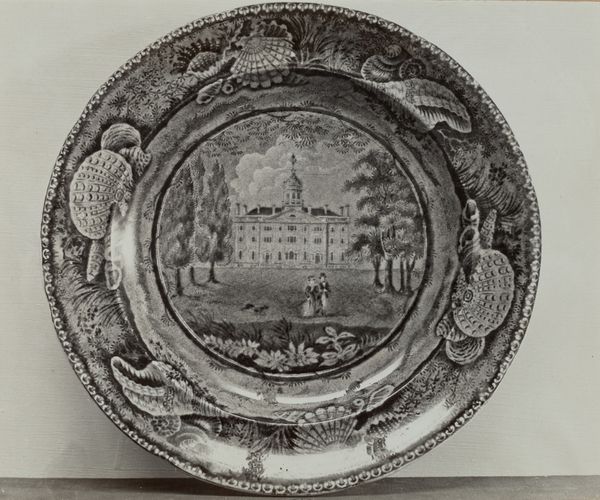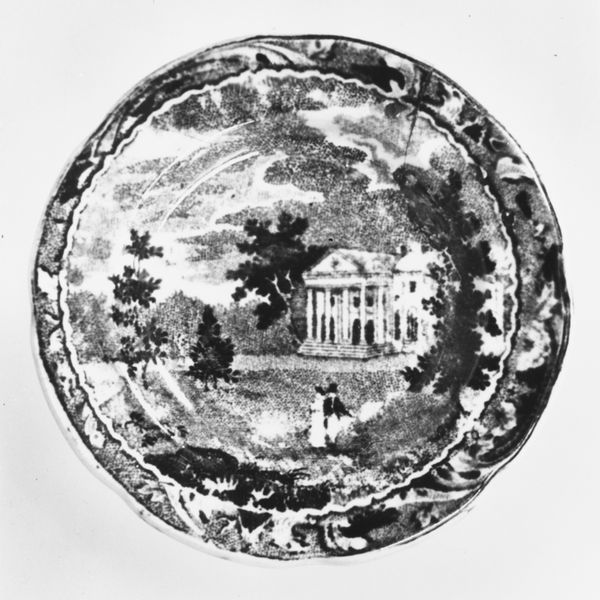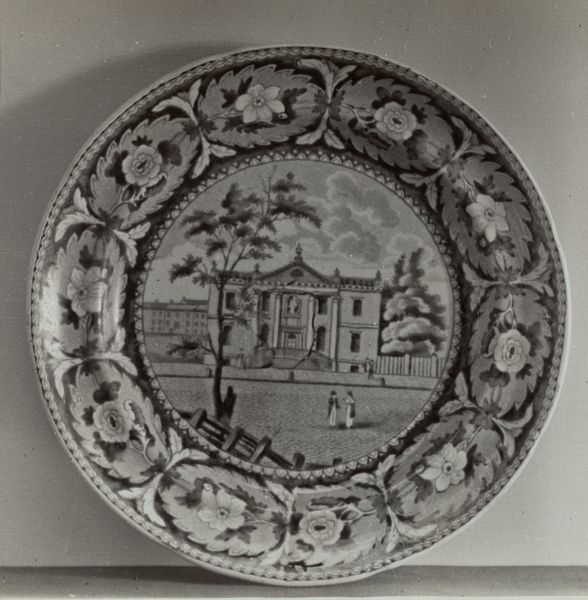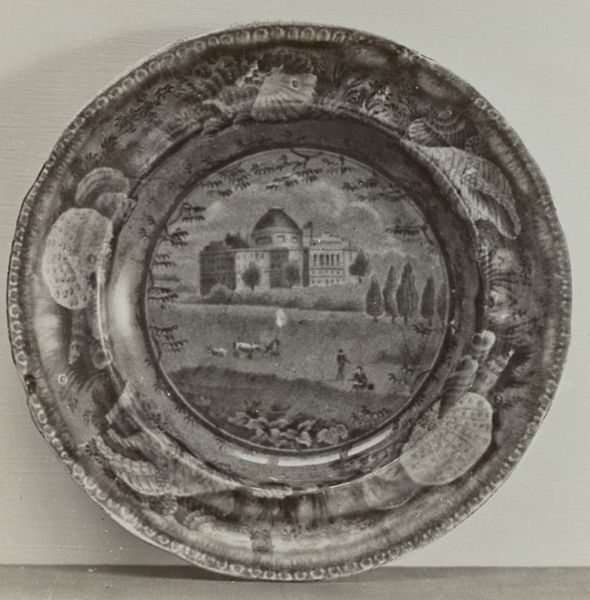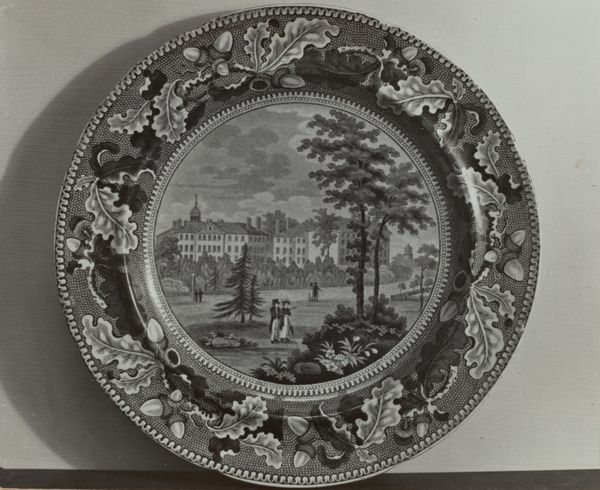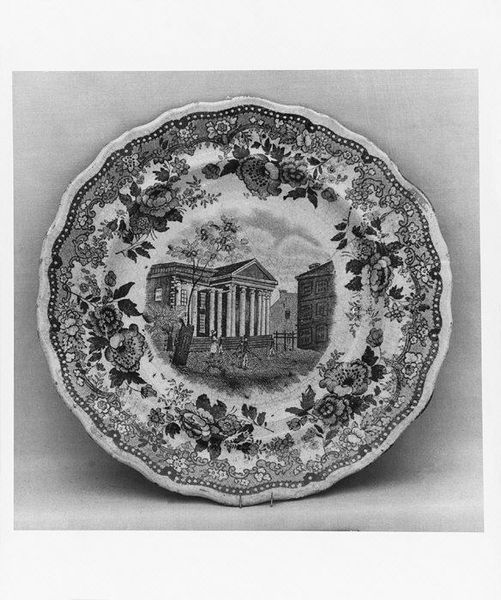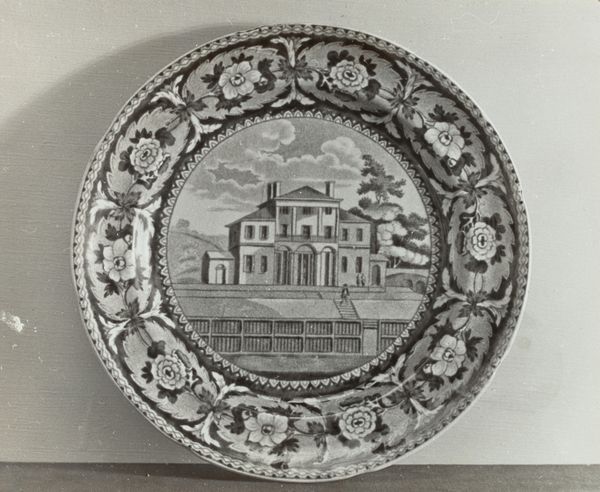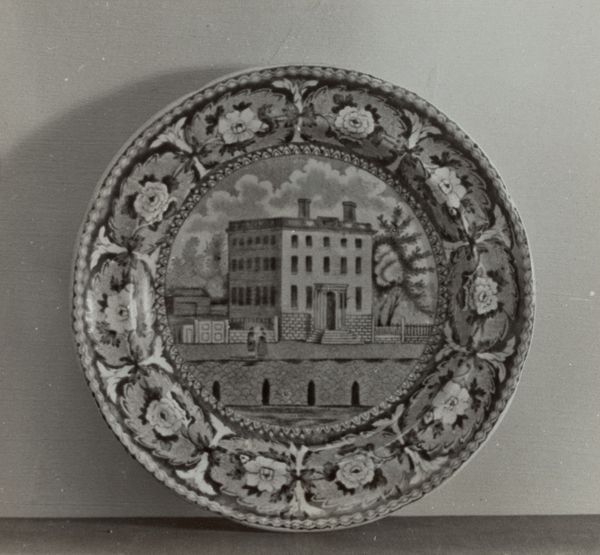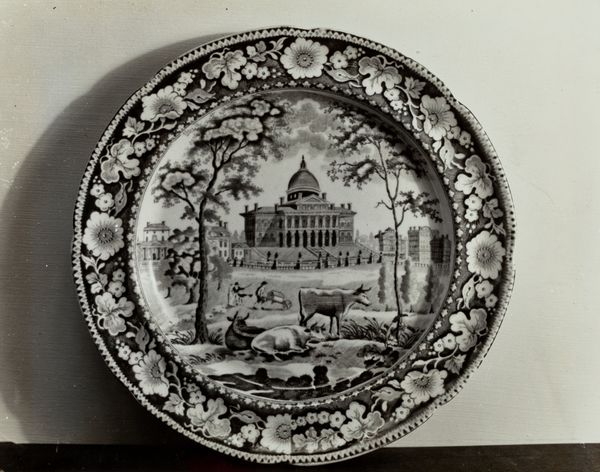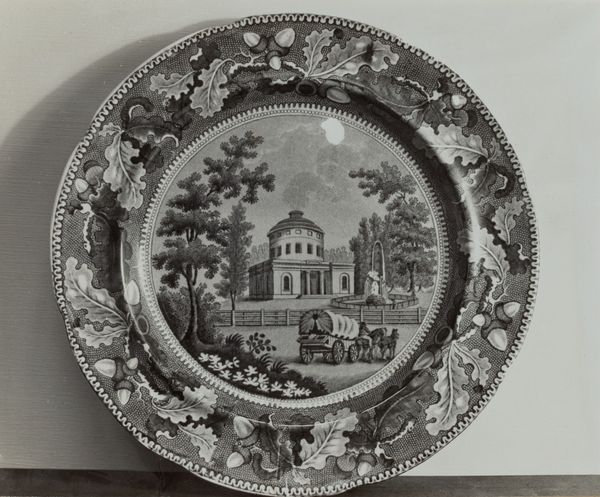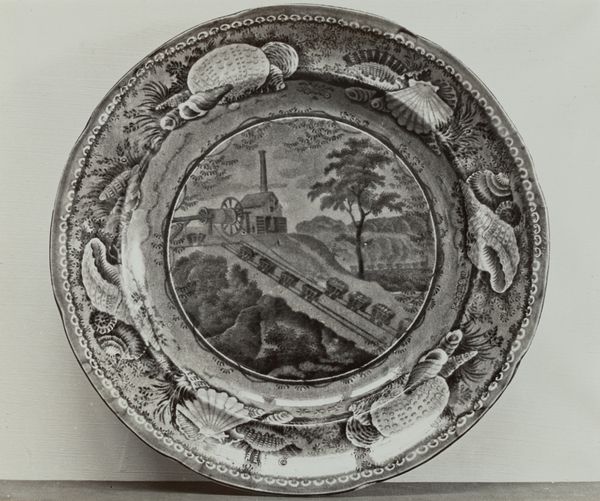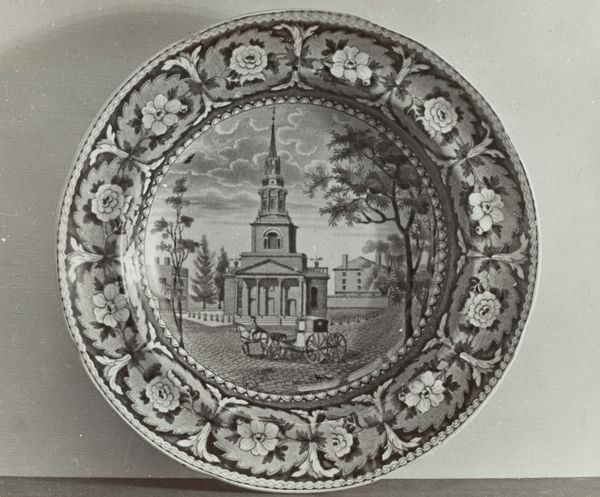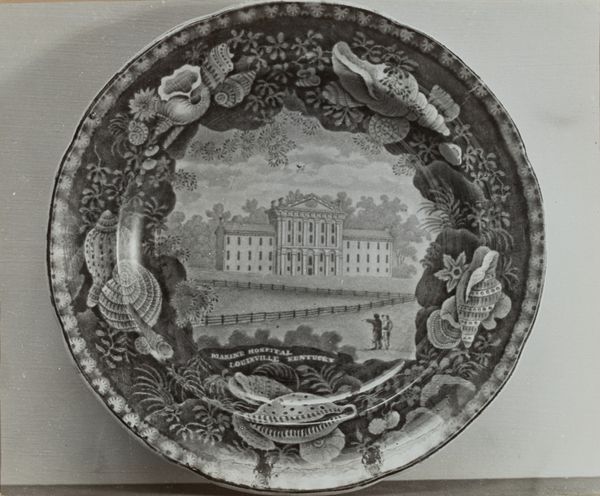
print, ceramic
# print
#
landscape
#
ceramic
#
orientalism
#
genre-painting
#
decorative-art
Dimensions: overall: 20.3 x 25.4 cm (8 x 10 in.) Original IAD Object: 12 5/8" wide; 16 3/8" long
Copyright: National Gallery of Art: CC0 1.0
Editor: Here we have a ceramic plate dating back to about 1936, titled "New York from Brooklyn Heights" by Helmut Hiatt. It features a neoclassical building set within a somewhat bucolic landscape. I'm struck by this tension—this classical idealism placed in what should be a quotidian setting. How do you read this work? Curator: It’s fascinating, isn't it? This piece is a potent reminder that even decorative objects can be loaded with political messaging. It's not just a pretty landscape; it's a constructed vision of America during the Depression era. The neoclassical architecture evokes ideals of democracy and stability, deliberately juxtaposed with a “common” landscape. Who is this vision for, and who is excluded? Editor: So, you're saying it's more than just a scene; it’s an assertion? Perhaps an aspiration to connect a young nation's origins with a specific moment in time? Curator: Exactly. Think about the cultural context of the 1930s. The US was grappling with immense economic hardship. Art like this can serve as propaganda, promoting a particular narrative of national identity and resilience through selective imagery and perhaps downplaying present conditions by glorifying the past. Consider who owned and used plates like these – how did they feel eating off an idealized past? Editor: That’s a really interesting perspective. I was initially thinking about aesthetics, but considering the social and political undercurrents really shifts my understanding. It's a visually pleasing piece, but now I can see a more complicated narrative about identity being projected. Curator: Right. And questioning these narratives is critical. Whose voices are amplified through this aestheticized history, and whose are silenced? What would a truly representative "New York from Brooklyn Heights" look like? Editor: I hadn't considered it that way at all. I guess even something as seemingly simple as a decorative plate can be a site of ideological negotiation. Thanks, that really helps me to reconsider what I see here. Curator: Precisely! Keeps your eyes and mind wide open.
Comments
No comments
Be the first to comment and join the conversation on the ultimate creative platform.
